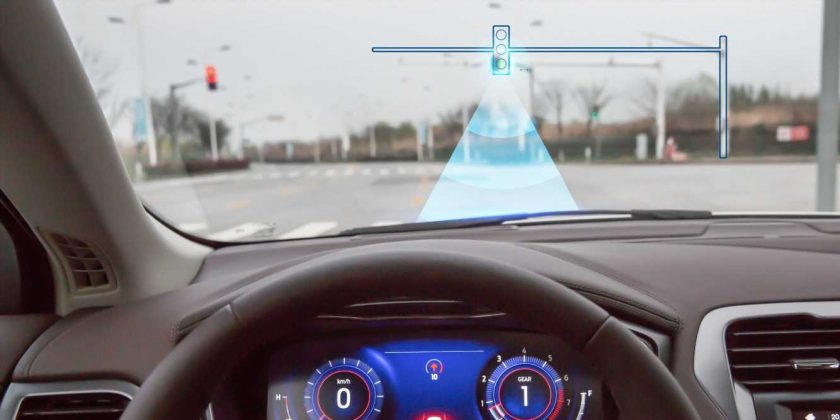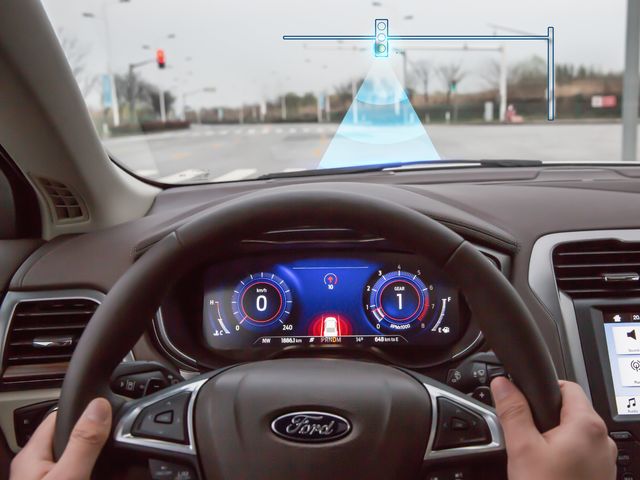If you own or have ridden in a car that was built within the last five years, there’s a good chance you’ve experienced touchscreens, navigation, and seen the innovative features that connected smartphone tech has brought to the automotive world. Now, imagine that your next car could not only receive software updates from the cloud, but that it could also communicate with other vehicles and even infrastructure such as road signs to deliver a more complete picture of what’s going on around it.
That’s the promise of vehicle-to-everything (V2X) technology. Today, we already have bits and pieces of V2X in various vehicle and roadway devices, but the full force of the tech has yet to be seen. If you are just learning about connected vehicles and the surrounding tech, read on to learn the basics of V2X.
What Is V2X?
The world is full of confusing acronyms, and unfortunately this one a biggie. Vehicle-to-everything, or V2X, is an all-encompassing term for a vehicle’s connected communications. The overall idea is that a vehicle is able, or will be able to, use its on-board communication tools to deliver real-time traffic information, preemptively react to changing road conditions, recognize road signs and warnings, and more. While V2X functions alone won’t be able to manage a vehicle without a driver on board, they are important building blocks in an autonomous vehicle’s ability to piece together a picture of its environment. Within the V2X stable, there are several other “vehicle-to” points of interest.
V2V
Vehicle-to-vehicle, also referred to as V2V, is a wireless information exchange between vehicles. Within a defined range, the technology can deliver messages from surrounding vehicles, which help determine the risk of crashes and can allow a driver to take early evasive actions, if necessary. The goal is to create a 360-degree awareness bubble of vehicles within the system’s range. The National Highway Traffic Safety Administration (NHTSA) notes that V2V technologies can greatly improve the effectiveness and accuracy of existing vehicle safety features, which use radar and camera to detect safety threats.
V2I
Vehicle-to-infrastructure (V2I) technology allows vehicles to share and receive information with other devices on or near the roadway. Depending on the area, there may be connected cameras, streetlights, signage, lane markers and more. Vehicle-to-infrastructure tech promises to improve roadway safety by helping prevent collisions by delivering more information, earlier, and to the right vehicles. A V2I system could help prevent multi-car pileups in foggy conditions, alert drivers to accidents around blind corners, and more proactively deliver notifications of construction zones.
V2P
Of all the communications innovations here, vehicle-to-pedestrian (V2P) may be the most complicated. The idea here is that vehicles will be able to use both onboard safety monitoring tools and some degree of communication with a pedestrian’s mobile device to avoid accidents. This could include people walking, riding bicycles, or even people entering and exiting mass transit vehicles. If a vehicle is having trouble stopping at an intersection, for instance, its onboard systems would deliver a notification to nearby pedestrians that crossing the street needs to wait. The challenge with V2P is that it requires a person to carry some degree of willingness to use their mobile phone as a safety alert beacon.
V2N
Vehicle-to-network (V2N) is similar to the other forms of V2X technology, in that it connects a vehicle to its surroundings, but the idea behind V2N is more expansive. Vehicle-to-network connects a vehicle to data centers, road infrastructure, and other cars. This effectively turns other drivers into road scouts, so if a navigation system is having trouble with accuracy or changing roads, a V2N-connected car can communicate with other vehicles to update and improve driving directions based on other drivers’ locations.
Challenges with Implementation and Adoption
Why aren’t we all riding in cars that communicate with each other and the environment? Well, as it turns out, implementing a wide-reaching, universal communication system isn’t quite that easy.
Privacy
We live in a world where privacy is top of mind for many people, so it’s easy to see how a vehicle communications system that both delivers and receives information without driver input could be scary for some. Concerns around location privacy, hacking or malware, and personal safety have led many people to become deeply skeptical of new technologies, giving V2X a slippery slope to climb. The picture becomes even murkier with V2P tech, which requires individuals to use their mobile devices as part of the communication framework.
Infrastructure
In order to have a connected vehicle that can effectively communicate with its surroundings, the infrastructure has to be in place to accommodate the tech. Updating signage and other road construction to pave the way for V2X is not only expensive, it’s tricky work that requires planning and innovation, which can be a big ask for cash- and resource-strapped municipalities.
Legislation
The United States is a country but operates as 50 different independent governments. Some states have traffic laws that are drastically different than others, in some cases even those that are directly next door. Now, imagine that every state needs to coordinate a technology rollout that is consistent and predictable, and that uses a widely accepted communication protocol. Doesn’t seem so easy, does it? How states set rules and legislate V2X will determine its rollout speed, adoption, and its costs, which ultimately slows the technology’s adoption, in vehicles, roadways, and in the surrounding communities.
Source: Read Full Article


